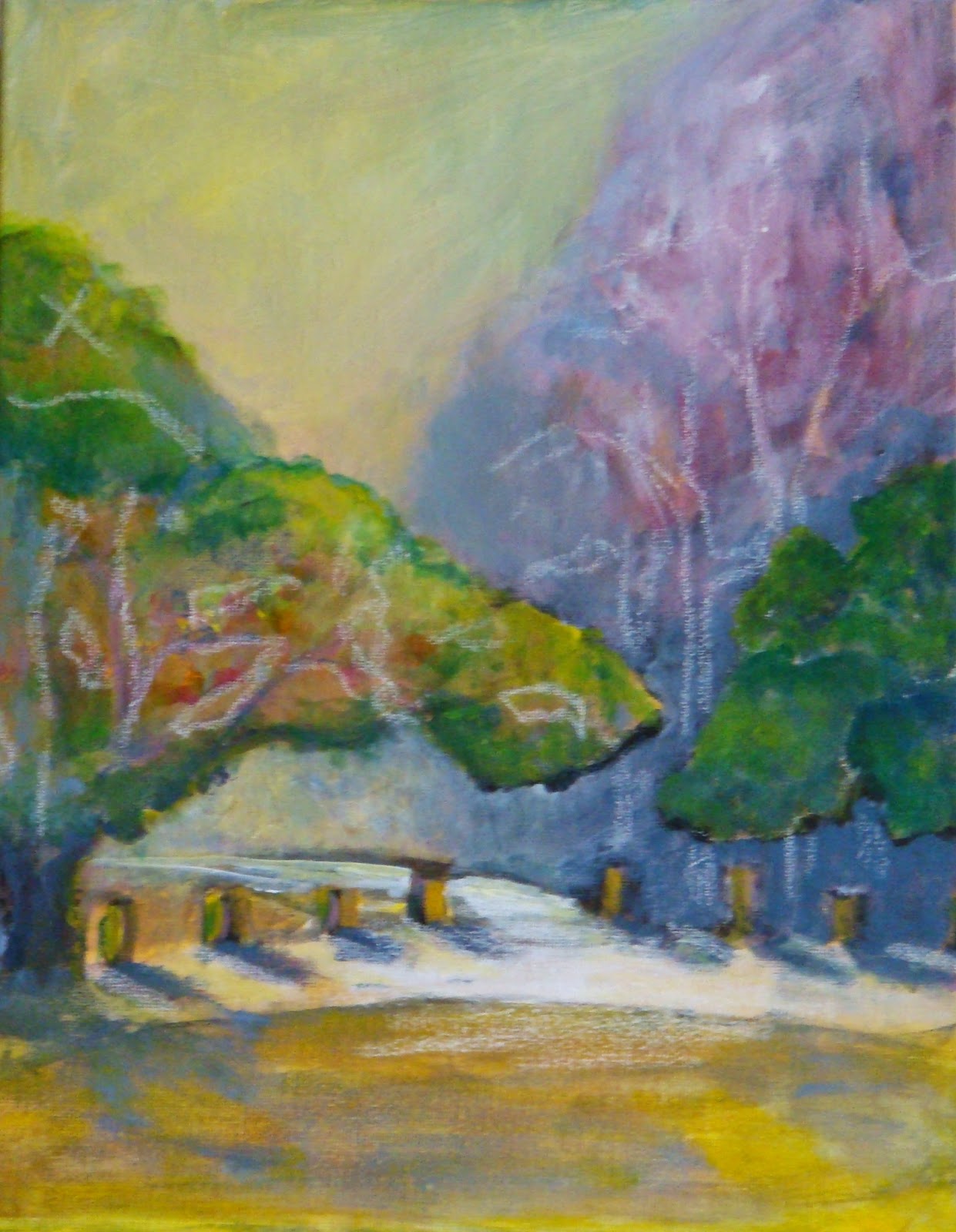 |
| John Traynor workshop demonstation |
You may be asking;"Why is Mr. Traynor painting a still life in a Plein Air workshop"? Day one was marvelous for painting outdoors but day two was iffy at best. We hold our regular workshops at a local church which has a beautiful room with large windows for natural light. First John demoed outside for those die hard paint in the rain plein air painters then he came up to the still life room and did another demo for the; "It's raining out there!" painters.
I have to give Mr. Traynor high marks as an instructor, he truly spent his time going from one student to the next to offer suggestions on how to improve their painting skills, he barely took time for lunch and was willing to stay late if students still needed help.
Painting a still life is the same color/value process as painting a landscape. Please read the previous blog to catch up on what I learned on day one. Here is my summary of the things I learned on day two painting a still life:
*We had an art light for the still life set up which John said this was a cool light therefore he painted a warm tone on his background. Remember cool light-warm shadows using a warm violet.
*Mass in the shadows and main shapes.
*Put a cool blue tone on any surfaces that have highlights. Cool light gives cool highlights but warm shadows
*Set up warm/cool colors shapes before getting into detail of local color.
*Mentally divide each object and surface into three zones; fore, mid and background. Determine a color that will represent each color/temperature change on that one surface.
Example: Cloth under the still life will be painted blue all over but the foreground add a warm color to the mixture, mid will have yellow ochre added and the background will have a cool color added. If you put a warm blue in the background zone it will look out of place and visa versa.
*Yellow and black make a great dark color for a background
*The key of a painting can be high or low. I am drawn to high key paintings.
*Color and value are a single concept.
*Gray+white+green= a silvery tone.
It always feels uncomfortable while painting using new concepts but I am learning to accept that odd feeling as strides toward improving my artistic skills.
 |
| John Traynor Still Life |




